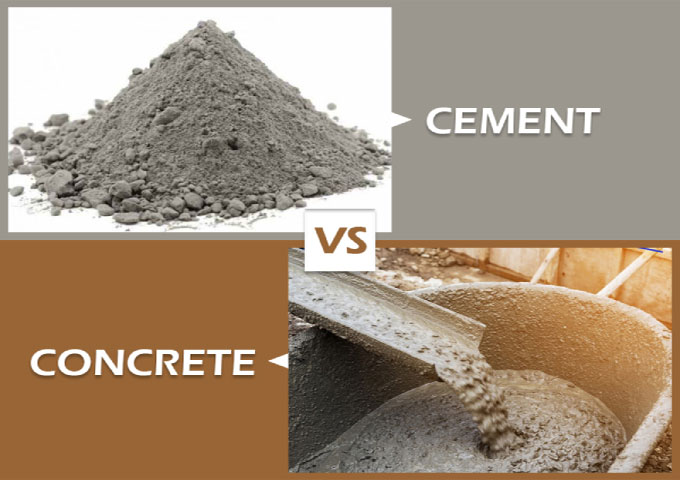
Back to Basics with Cement and Concrete

It should be fairly obvious, but it is still true that many people get confused between cement and concrete. While learned construction industry professionals will never make that mistake, today our article is more directed towards the layperson. If you are not much familiar with them, you should read this article going back to basics with cement and concrete.
Some people often mistake cement for concrete, and vice-versa. Often, they mean ?concrete? when they say ?cement? - and the opposite is just as true.
While the common populace often uses the terms alternatively, they are just as similar as water and lemonade! So, today we will get into cement and concrete and see which is which. This will help you understand which one is which. And which is used where.
What is Cement
Cement is a basic element used in construction industry extensively. It is a core building material that is rarely used alone ? most of the time, some other stuff is mixed with cement to make a compound, which then is used in building work. Cement is the adhesive that holds those other material together excellently and is quite resistant to heat and weathering effects.
Common cement looks like a fine powder; gray or greenish-gray in the raw form, though there are many varieties of cement that can be even white or reddish in color. It is made from limestone and clay, in general. It can also be made from chalk and shale.
Depending upon own properties, cement can alter the properties of the stuff it makes radically. It is a caustic produce that can cause chemical burns on exposed skin, and cement dust when inhaled may increase chances of lung cancer.
How is cement made
Cement is a powder, so the basic work in manufacturing cement is to grind the raw materials into a rough dust. There are two main types of ingredients in cement - calcareous material (chalk, limestone) and argillaceous material (clay, shale).
When the materials are ground, they are burned in a kiln. The temperature inside the kiln should be close to 1400 degree centigrade for proper baking. The resultant material is called a clinker now, and it is cooled off.
When the clinker is cool enough, 3% to 5% gypsum is added to it and the mix is ground to a fine dust now. The output is bagged as cement.
What is Concrete
Concrete is not one material; it is a combination of many. Cement is one of those materials that make up concrete. With concrete, you mix sand and stone chips, and add water to it. The result of this is called a concrete mix. Leave the mix alone for a day or two, and it will get as hard as a rock (harder even than some rocks). That is a lump of concrete you have.
There are three main ingredients in concrete in general ? some type of cement, some type of fine aggregate (like sand), and some kind of coarse aggregate (like stone chips). The fine and coarse aggregates are there to provide strength to the concrete, and the cement is there to work as the adhesive that steadfastly holds them together, by reacting with the water.
The result, concrete, is an excellent building material and can take a lot of load before you can break it. Naturally, that makes concrete one of the most popular building materials in the whole construction industry. It is mostly used to construct load-bearing members of a building ? like columns and beams.
By varying the nature and ratio of the materials in the concrete mix, you can give the concrete different properties ? like making it set amazingly fast, or make it liquid enough to pour down difficult gaps, or produce a slow-setting but incredibly strong product. You can also add other stuff in the concrete, like fly ash or polymers to make it adopt some surprising qualities.
How concrete is made
Since concrete is not something you buy at a shop, you have to ?mix? the concrete where you are building the structure, and then apply it and let it set. That is how you get finished concrete. The concrete making process has the following steps:
1. Preparing the dry mix with the dry components (cement, sand, aggregates) in proper ratio
2. Preparing the wet mix by adding water and mixing well
Read more: How to mix concrete properly?
3. Taking a slump test to see if the concrete has the properties you need or not
4. If the concrete mix is satisfactory, transport it quickly to where it is to be cast
5. Pour the concrete inside proper formwork
Read more: What is formwork?
6. Vibrate or compact the concrete properly to get any bubbles out and spread it well
7. Let the concrete set for the expected time
8. Let the concrete cure for the expected time
Conclusion
By now, you must be clear about what is concrete and what is cement, and the difference between cement and concrete. TL; DR: - you can buy cement at the hardware shop by bags, but you cannot buy concrete ? you must make it using cement, sand, and aggregates.
I hope that clears it up! Please let us know your thoughts and suggestions using the comment form below.

Image Courtesy: gharpedia.com

